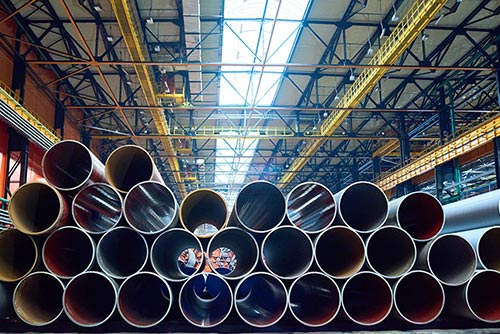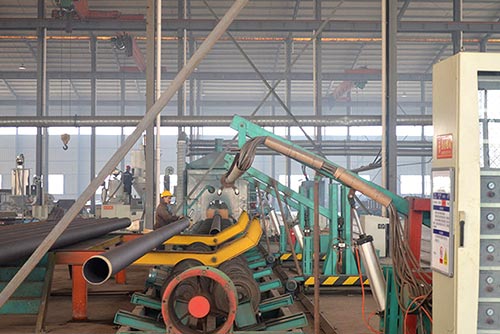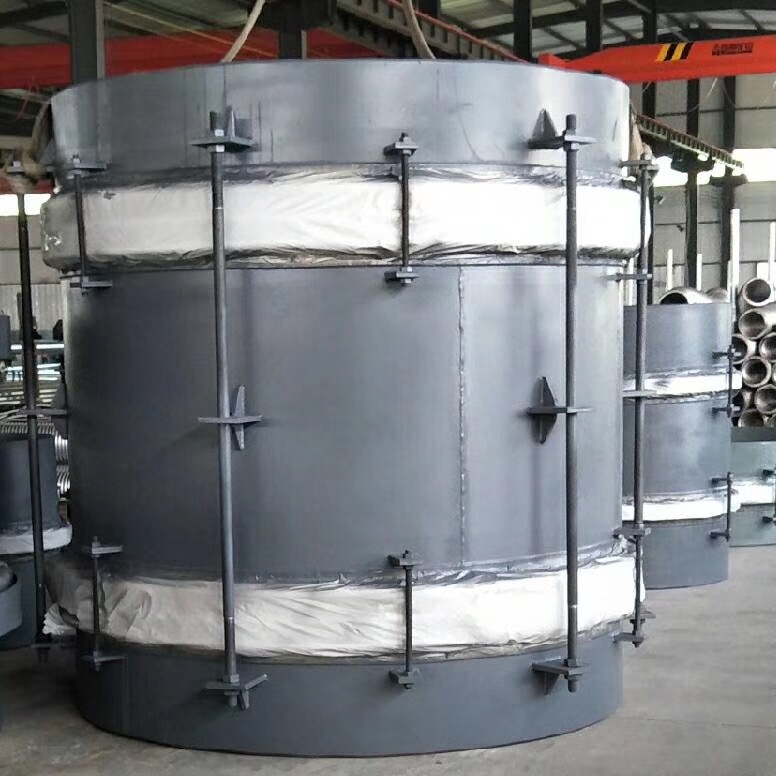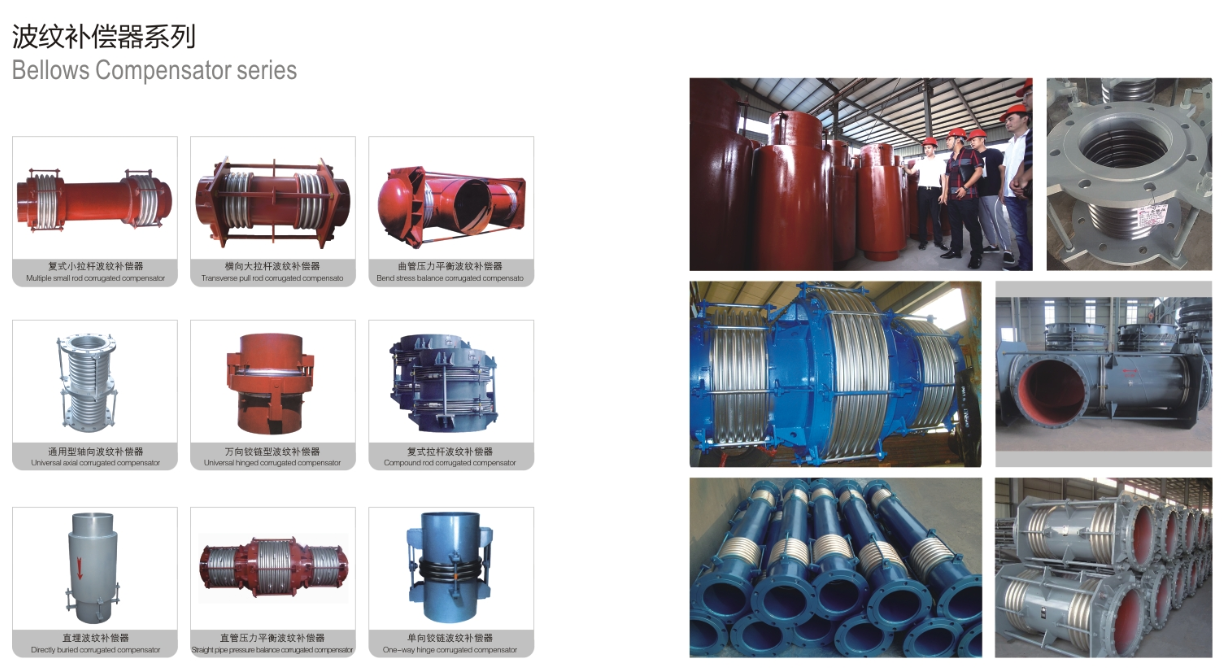
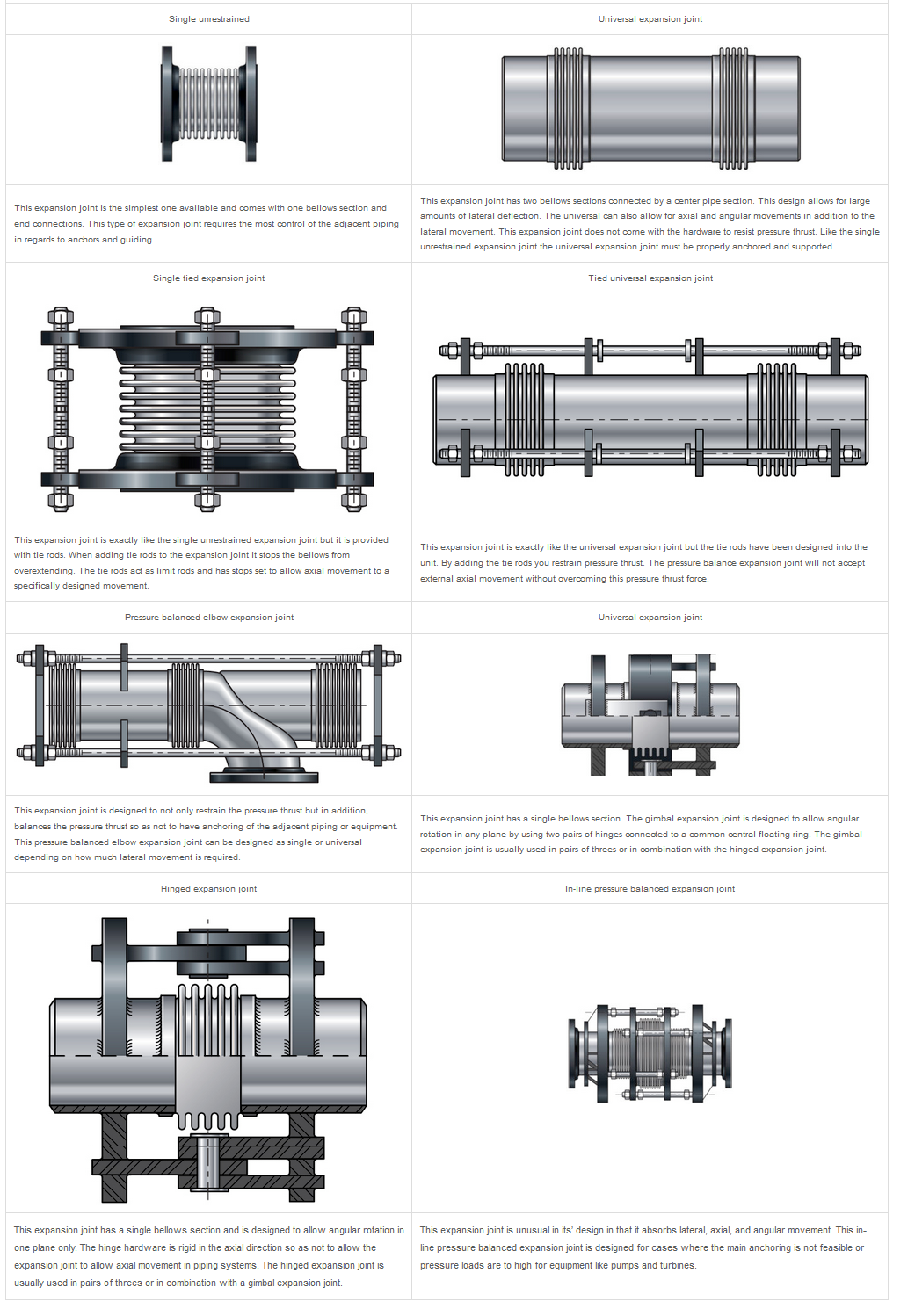
|
The bellows of an expansion joint is manufactured from relatively thin material in order to provide the flexibility needed to absorb the specified movement. The life of the Expansion Can be shortened if the unit is improperly handled and / or installed. This can arise from direct physical damage to the bellows through stresses imposed during installation, or by the factors. Therefore some basic instructions must be followed having safe and proper installation of Expansion joints. There are several other things to consider when choosing whether or not to use a flow liner. Due to lateral movements, the gap between the bellows and the internal sleeve must be designed appropriately in order to prevent contact or binding against the inside diameter of the pipe or fitting. Also, making sure the inside diameter of the internal sleeve does not create back pressure or restrict the flow of media is extremely important, and usually can be avoided by utilizing an oversize bellows. Stainless steel bellows, as a flexible pressure-resistant pipe fittings, are installed in the liquid transportation system to compensate for the mutual displacement of the connecting ends of pipes or machines and equipment, absorb vibration energy, and can play the role of vibration reduction and silencing. They have many characteristics, such as good flexibility, light weight, corrosion resistance, fatigue resistance, high and low temperature resistance. What are Metal Bellows?Metal bellows are elastic vessels that can be compressed when pressure is applied to the outside of the vessel, or extended under vacuum. When the pressure or vacuum is released, the bellows will return to its original shape (provided the material has not been stressed past its yield strength). Expansion joints and metal bellows are vital components in a huge range of industrial settings. They play a vital role in equipment which needs to withstand high pressures, whether that is from gases or liquids. The units are designed to safely and reliably expand under pressure, and take prescribed temperatures in their stride. They can be formed from common metals such as stainless steel in various grades, and more exotic alloys such as Inconel can be used as per your requirements. Metal Bellow Types There are two main types of metal bellows – formed and welded. Formed bellows are produced by reworking tubes, normally produced by deep drawing, with a variety of processes, including cold forming (rolling), electroforming and hydroforming. They are also called convoluted bellows or sylphons. Welded bellows (also called edge-welded, or diaphragm bellows) are manufactured by welding a number of individually formed diaphragms to each other. The comparison between the two bellows types generally centers around cost and performance. Hydroformed bellows generally have a high tooling cost, but, when mass-produced, may have a lower piece price. However, hydroformed bellows have lower performance characteristics due to relatively thick walls and high stiffness. Welded metal bellows are produced with a lower initial tooling cost and maintain higher performance characteristics. The drawback of welded bellows is the reduced metal strength at weld joints, caused by the high temperature of welding. Electroformed bellows can be produced with modest tooling costs and with thin walls (25 micrometres or less), providing them with high sensitivity and precision in many exacting applications. Another area of comparison is in metals of construction. Hydroformed and rolled bellows are limited to metals with high plastic elongation characteristics, whereas welded bellows may be fabricated from a wider variety of standard and exotic alloys, such as stainless steel and titanium, as well as other high-strength, corrosion-resistant materials. Electroformed bellows can be produced of nickel, its high-strength alloys, and copper. Metal bellow Applications Bellows, welded or convoluted (formed) are used in a large number of industrial applications. Below you will find a few: Load cells-A load cell deforms if a certain load in the form of a pressure or a strain is imposed on it. This deformation is then detected by a strain gauge through which a low voltage direct current is flowing. The change in voltage is detected and made visible on a control panel. A bellows is mounted over the gauge to protect it from outside influences. Vacuum interrupters-For the switching of very high voltages in transformer stations sparks should be avoided. To prevent any danger that the surrounding atmosphere will explode, oxygen has to be removed in the area where the sparks occur. This can be done by sealing the spark area completely. Bellows are used to seal such confined volumes and the inside of the bellows is evacuated or filled with an inert gas. Mechanical Seals-These are mostly used to close the inside of a pump from the outside world to prevent leakage. For that purpose, a mechanical seal is mounted on the pump shaft. As the pump shaft is turning, there has to be a sealing element consisting of a stationary and a rotating ring. To enforce sufficient pressure on the two rings one is fitted with a spring. This spring can also have the form of a diaphragm (welded) bellow. Pressure gauges-If the pressure of aggressive fluids or gases has to be measured, the gauge has to be isolated from the flow. For critical applications a diaphragm sealing is used instead of a bourdon tube in the gauge. This gives more security that the aggressive media will not leak. The diaphragm is a self contained sensor, transmitting the displacement to the measuring device. Sensors- In this application diaphragm or convoluted bellows are completely sealed and filled with a certain gas. Two electrical poles are penetrating the inside of the bellows. By varying the current of those two poles the temperature inside the bellows can be regulated. The expansion or contraction of the bellows is used as an actuator to control a certain movement. Valve Sealing- A bellows is used between the housing and the rising stem to seal the inside completely from the outside world. In Europe this is of particular importance as regulations such as TA Luft prohibit any leakage. Couplings for stepper motors and servomotors- The flexible part, capable of compensating for misalignment is made by a bellows. It ensures that there is no angular positioning difference between the two coupling halves. This is essential if the positioning accuracy should be extremely precise. Exhaust Bellows- Running engines cause self vibration. To compensate for those movements and temperature differences resulting in thermal expansion, bellows are used to connect the exhaust gas pipes to the funnel. Piping expansion joint-In this application, bellows are formed in series to absorb thermal movement and vibration in piping systems that transport high temperature media such as exhaust gases or steam. Metal bellows are also used in other products and market segments, including medical applications like implantable drug pumps, to industrial actuators, to aerospace applications such as altitude sensors and fluid management devices (accumulators, surge arresters, volume compensators, and fluid storage). Metal bellows are also found in space applications, providing reservoirs with potable water as well as accumulators to collect wastewater. Metal bellow Applications Bellows, welded or convoluted (formed) are used in a large number of industrial applications. Below you will find a few: Load cells-A load cell deforms if a certain load in the form of a pressure or a strain is imposed on it. This deformation is then detected by a strain gauge through which a low voltage direct current is flowing. The change in voltage is detected and made visible on a control panel. A bellows is mounted over the gauge to protect it from outside influences. Vacuum interrupters-For the switching of very high voltages in transformer stations sparks should be avoided. To prevent any danger that the surrounding atmosphere will explode, oxygen has to be removed in the area where the sparks occur. This can be done by sealing the spark area completely. Bellows are used to seal such confined volumes and the inside of the bellows is evacuated or filled with an inert gas. Mechanical Seals-These are mostly used to close the inside of a pump from the outside world to prevent leakage. For that purpose, a mechanical seal is mounted on the pump shaft. As the pump shaft is turning, there has to be a sealing element consisting of a stationary and a rotating ring. To enforce sufficient pressure on the two rings one is fitted with a spring. This spring can also have the form of a diaphragm (welded) bellow. Pressure gauges-If the pressure of aggressive fluids or gases has to be measured, the gauge has to be isolated from the flow. For critical applications a diaphragm sealing is used instead of a bourdon tube in the gauge. This gives more security that the aggressive media will not leak. The diaphragm is a self contained sensor, transmitting the displacement to the measuring device. Sensors- In this application diaphragm or convoluted bellows are completely sealed and filled with a certain gas. Two electrical poles are penetrating the inside of the bellows. By varying the current of those two poles the temperature inside the bellows can be regulated. The expansion or contraction of the bellows is used as an actuator to control a certain movement. Valve Sealing- A bellows is used between the housing and the rising stem to seal the inside completely from the outside world. In Europe this is of particular importance as regulations such as TA Luft prohibit any leakage. Couplings for stepper motors and servomotors- The flexible part, capable of compensating for misalignment is made by a bellows. It ensures that there is no angular positioning difference between the two coupling halves. This is essential if the positioning accuracy should be extremely precise. Exhaust Bellows- Running engines cause self vibration. To compensate for those movements and temperature differences resulting in thermal expansion, bellows are used to connect the exhaust gas pipes to the funnel. Piping expansion joint-In this application, bellows are formed in series to absorb thermal movement and vibration in piping systems that transport high temperature media such as exhaust gases or steam. Metal bellows are also used in other products and market segments, including medical applications like implantable drug pumps, to industrial actuators, to aerospace applications such as altitude sensors and fluid management devices (accumulators, surge arresters, volume compensators, and fluid storage). Metal bellows are also found in space applications, providing reservoirs with potable water as well as accumulators to collect wastewater. |
- Telphone- 0317-6165555 6689999
- E-mail- 798758696@qq.com
- Address- Yanshan County Industrial Park, Cangzhou City, Hebei Province
- Telphone- 0317-6165555 6689999
- E-mail- 798758696@qq.com
- Address- Yanshan County Industrial Park, Cangzhou City, Hebei Province


